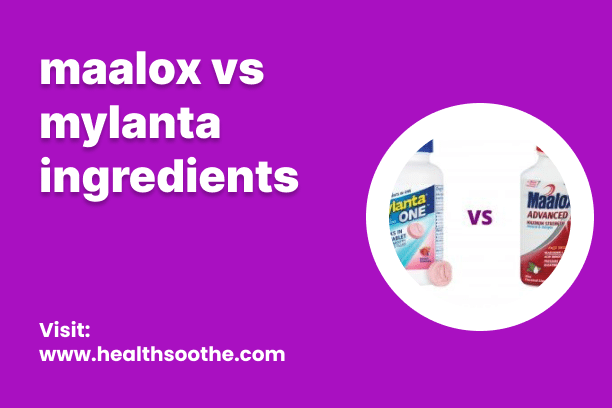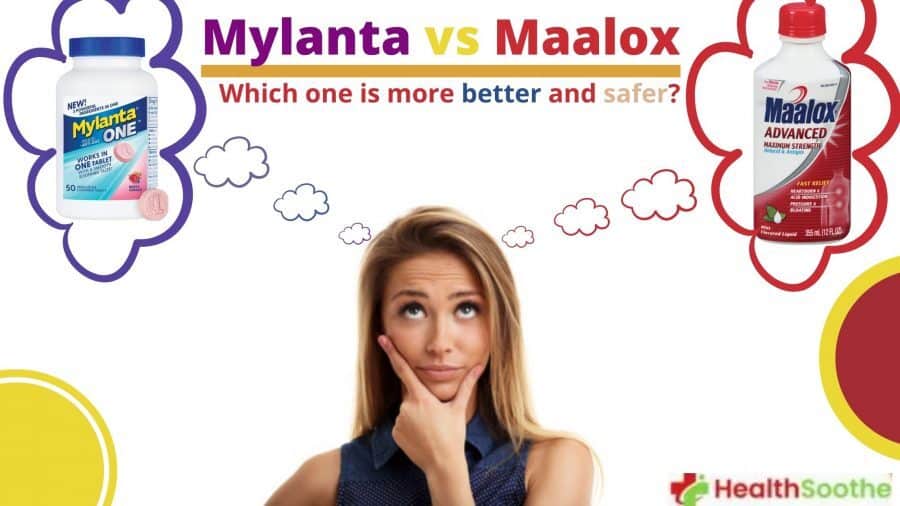Maalox, a widely recognized antacid, has been utilized extensively over the years to alleviate symptoms associated with acid-related ailments. Comprising a blend of two key components, aluminum hydroxide and magnesium hydroxide, Maalox has established its reputation for effectively addressing acid reflux and heartburn discomfort. Delving deeper into Maalox's composition and its mechanism within the body reveals its trusted role in providing relief from these symptoms.
Composition of Maalox
The aluminum hydroxide component in Maalox functions by neutralizing stomach acid, while magnesium hydroxide serves as a laxative, alleviating constipation often associated with antacid consumption. Together, these ingredients offer a dual-action strategy for managing symptoms of acid reflux and heartburn.
Aluminum hydroxide, appearing as a white powder, effectively neutralizes excess stomach acid by binding with it to create aluminum chloride and water. This chemical process promptly alleviates symptoms by neutralizing the acid. Conversely, magnesium hydroxide, present as a milky white suspension, promotes bowel movements, thus preventing constipation that may arise from antacid usage.
The combination of aluminum hydroxide and magnesium hydroxide in Maalox ensures not only the relief of acid reflux and heartburn symptoms but also the mitigation of potential constipation concerns.
How Maalox Works in the Body
Upon ingestion, Maalox initiates its action within the stomach. The aluminum hydroxide component reacts with surplus stomach acid to produce aluminum chloride and water, effectively neutralizing the acid and swiftly alleviating symptoms. Furthermore, magnesium hydroxide facilitates bowel movements, mitigating the risk of constipation often associated with antacid consumption.
As it enters the stomach, Maalox commences its beneficial effects. Aluminum hydroxide molecules bind with excess stomach acid, diminishing its acidity and easing the burning sensation characteristic of acid reflux and heartburn. Concurrently, magnesium hydroxide prompts intestinal activity, fostering regular bowel movements and averting discomfort caused by constipation.
Maalox's dual-action strategy ensures prompt relief from immediate symptoms while simultaneously addressing the root causes of acid reflux and constipation. This comprehensive approach delivers enduring relief and comfort to individuals experiencing gastrointestinal distress.
Potential Side Effects of Maalox
While Maalox is generally deemed safe for most individuals, it's essential to be mindful of potential side effects. These may encompass diarrhea, constipation, stomach cramps, and nausea, though they are typically infrequent and mild in intensity.
Should you encounter severe or persistent side effects while utilizing Maalox, it is advisable to seek guidance from your healthcare practitioner. They can evaluate your condition and recommend the most appropriate course of action.
Additionally, it's important to acknowledge that Maalox may interact with certain medications. Hence, informing your healthcare provider about any concurrent medications is crucial to prevent potential drug interactions.
In summary, Maalox stands as a reputable antacid for alleviating symptoms of acid reflux, heartburn, and related conditions. Its dual-action formula, comprising aluminum hydroxide and magnesium hydroxide, ensures rapid symptom relief while addressing potential constipation. Although adverse effects are uncommon, consulting a healthcare provider is prudent if you experience any severe or persistent symptoms while using Maalox.
A Comprehensive Review of Mylanta
Mylanta, another prevalent antacid, is recognized for its efficacy in alleviating symptoms of acid reflux and heartburn. Like Maalox, it comprises a blend of two primary components: aluminum hydroxide and magnesium hydroxide.
Over the years, Mylanta has established itself as a reliable brand, offering relief to numerous individuals grappling with the discomfort associated with acid reflux and heartburn. Its widespread popularity is owed to its potent yet gentle formulation, which efficiently neutralizes stomach acid.
Read Also: Natural Medication to Help a Woman Climax
Ingredients in Mylanta
Mylanta incorporates aluminum hydroxide and magnesium hydroxide, collaborating to counteract stomach acid. Aluminum hydroxide swiftly counteracts the acid, promptly relieving the burning sensation induced by acid reflux. Conversely, magnesium hydroxide facilitates bowel movements, preventing constipation triggered by antacid consumption.
Renowned for its acid-neutralizing capabilities, aluminum hydroxide reacts with surplus stomach acid, generating a neutral compound that assuages the discomfort linked with acid reflux. Meanwhile, magnesium hydroxide not only assists in neutralizing stomach acid but also promotes regular bowel movements, fostering a well-functioning digestive system.
The Mechanism of Mylanta
Upon ingestion, Mylanta's aluminum hydroxide and magnesium hydroxide interact with stomach acid, resulting in the formation of neutral compounds. This reaction effectively diminishes stomach acidity, offering relief from symptoms associated with acid reflux and heartburn. Additionally, the magnesium hydroxide component facilitates regular bowel movements, counteracting constipation often triggered by antacid usage.
Mylanta's distinctive formulation ensures not only immediate but also enduring relief from acid reflux and heartburn. It operates by establishing a protective barrier along the esophageal lining, shielding it from the erosive impact of stomach acid. This protective shield not only prevents further damage but also imparts a soothing sensation, alleviating discomfort.
Pros and Cons of maalox versus mylanta
Maalox:
Pros:
- Effective at neutralizing stomach acid, providing relief from acid reflux and heartburn.
- Contains aluminum hydroxide and magnesium hydroxide, which work together for dual-action relief.
- Generally well-tolerated with minimal side effects.
Cons:
- May cause rare side effects such as diarrhea, constipation, stomach cramps, and nausea.
- May interact with certain medications, so it's important to consult a healthcare professional before use.
- Some individuals may find the taste or texture unpleasant, especially with certain formulations.
Mylanta:
Pros:
- Effectively neutralizes stomach acid, providing relief from acid reflux and heartburn.
- Contains aluminum hydroxide and magnesium hydroxide, similar to Maalox, for dual-action relief.
- Generally well-tolerated with minimal side effects.
Cons:
- May cause rare side effects such as diarrhea, constipation, stomach cramps, and nausea.
- Like Maalox, may interact with certain medications, necessitating consultation with a healthcare professional.
Differences Between maalox versus mylanta and focalin
Maalox and Mylanta
Maalox and Mylanta are antacids primarily used to relieve symptoms of acid reflux, heartburn, and indigestion. They contain aluminum hydroxide and magnesium hydroxide, which work together to neutralize stomach acid.
Focalin
Focalin, on the other hand, is a medication used to treat attention deficit hyperactivity disorder (ADHD). Its active ingredient is dexmethylphenidate, a central nervous system stimulant.
Alternative to maalox versus mylanta
Tums:
Tums is a popular antacid that contains calcium carbonate. It works by neutralizing stomach acid and providing relief from heartburn and indigestion. Tums is available in various formulations, including chewable tablets and liquid forms.



